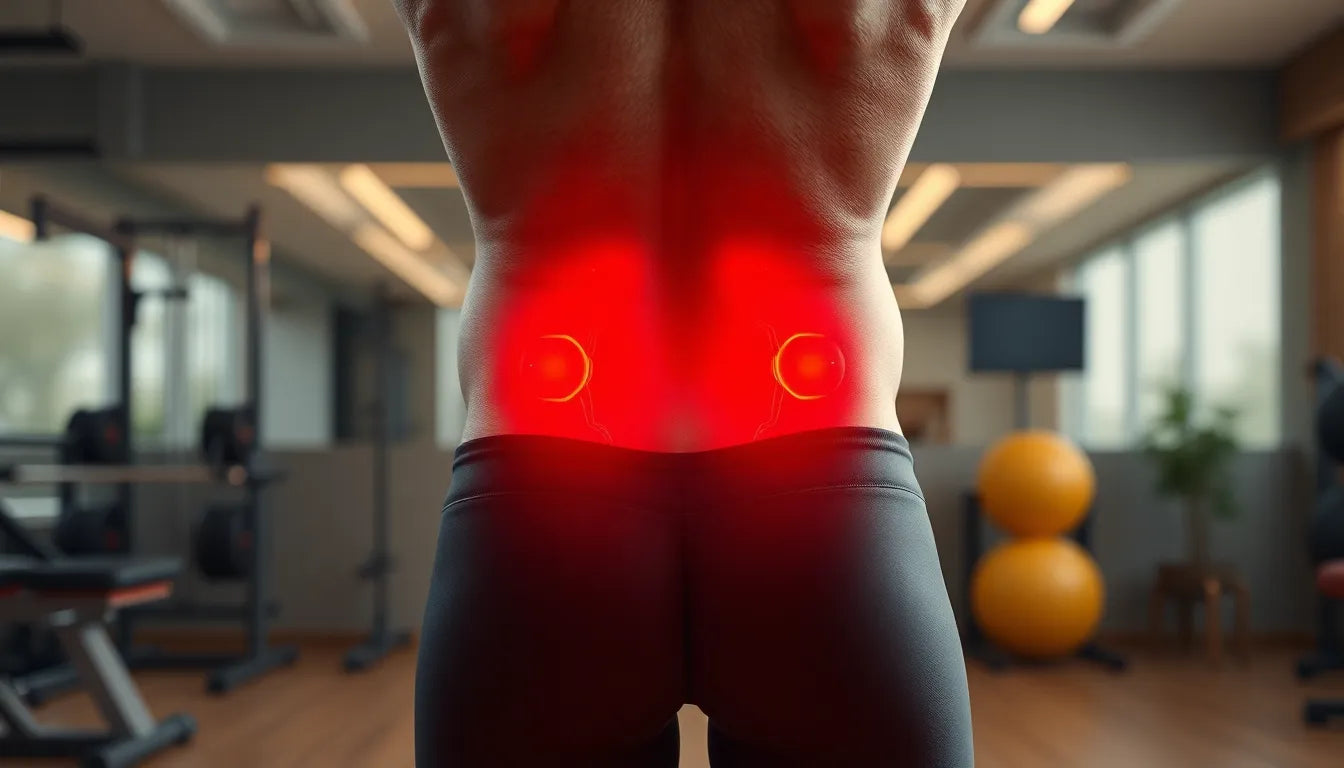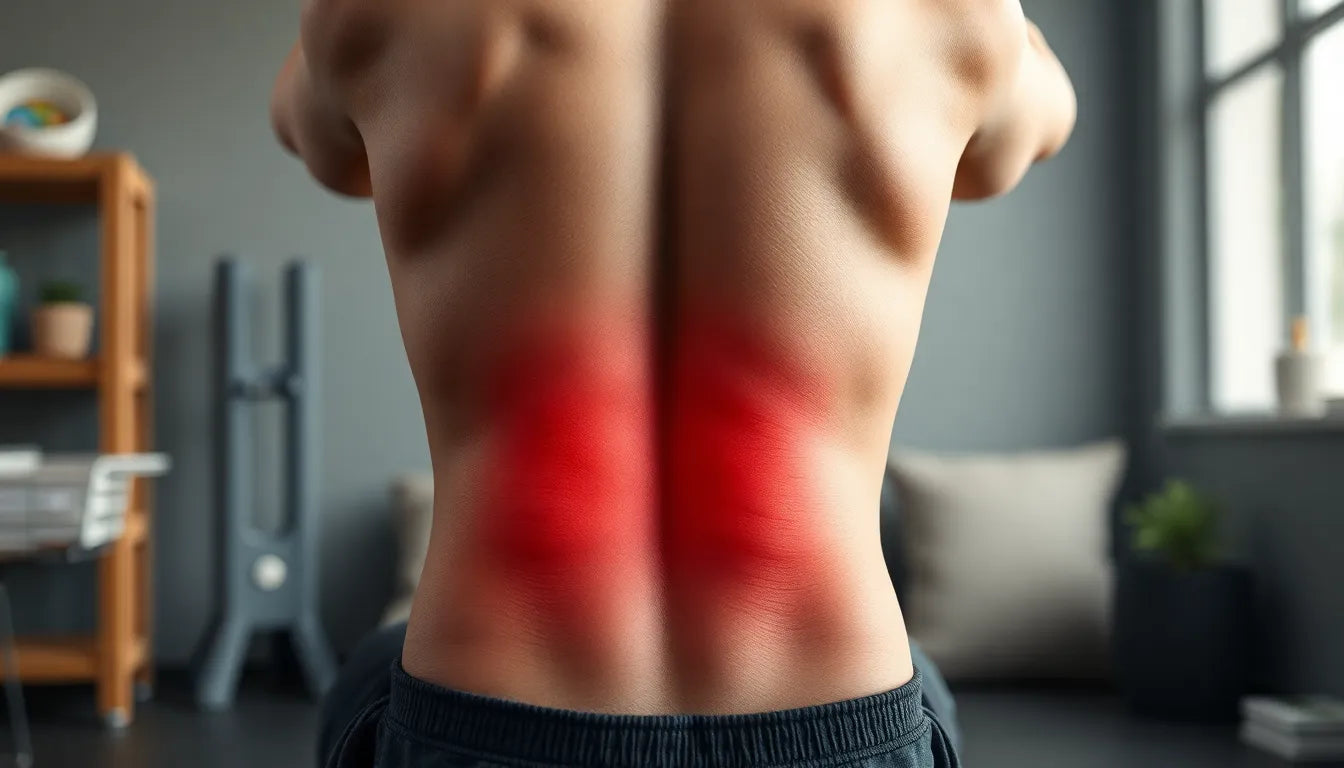Have you ever experienced a sudden, sharp pain in your lower back that just won't go away? If so, you might be dealing with a pinched nerve in your lower back. This condition is more common than you might think and can significantly impact your daily activities, from sitting at your desk to enjoying a leisurely walk. Understanding what a pinched nerve is and recognizing its symptoms are crucial steps toward finding relief and improving your quality of life.
Understanding the condition
A pinched nerve in the lower back occurs when excessive pressure is applied to a nerve by surrounding tissues, such as bones, cartilage, muscles, or tendons. This pressure disrupts the nerve's function, leading to symptoms that can range from mildly irritating to severely debilitating. The lower back, or lumbar region, is particularly susceptible to this condition due to the complex network of nerves and the significant weight and stress it bears throughout the day.
Key symptoms of a pinched nerve in the lower back include sharp pain, numbness, tingling sensations, and muscle spasms. These symptoms can sometimes extend beyond the lower back, affecting the legs and feet, a condition commonly referred to as sciatica. Sciatica occurs when the pinched nerve affects the sciatic nerve, which runs from the lower back down through the legs. This can lead to shooting pain that travels down the leg, making it uncomfortable to stand, walk, or even sit for extended periods.
Importance of addressing the issue
Addressing a pinched nerve in the lower back promptly is essential to prevent the condition from worsening. Ignoring the symptoms can lead to increased pain and potentially permanent nerve damage. Early diagnosis and treatment can not only alleviate discomfort but also prevent complications, allowing you to return to your normal activities without the constant worry of pain.
Seeking medical advice is a crucial step in managing a pinched nerve. Healthcare professionals can provide a comprehensive evaluation, often using imaging tests like MRI or CT scans to pinpoint the exact location and cause of the nerve compression. From there, a tailored treatment plan can be developed to address your specific needs, whether through conservative methods or more advanced interventions.
In summary, if you're experiencing persistent lower back pain or any of the symptoms associated with a pinched nerve, it's important to take action. By understanding the condition and its impact, you can make informed decisions about your health and seek appropriate treatments to find relief and improve your quality of life.
Causes of a pinched nerve in the lower back
Understanding the root causes of a pinched nerve in the lower back is crucial for effective management and prevention. The primary cause is physical pressure on the nerves near the lower vertebrae. This pressure often results from conditions such as herniated discs, where the soft inner gel of the disc protrudes through a tear in the tougher outer layer, pressing on nearby nerves. Another common cause is spinal stenosis, a narrowing of the spaces within the spine, which increases pressure on the spinal cord and nerves.
Other factors that contribute to a pinched nerve include bone spurs, which are bony growths that can develop along the edges of bones, and injuries that cause swelling or misalignment of the spine. Additionally, repetitive motions or holding the body in one position for long periods, such as sitting at a desk, can exacerbate the condition.

Conservative treatment options
For many individuals, conservative treatment options can effectively alleviate the symptoms of a pinched nerve in the lower back. At-home remedies are often the first line of defense, including rest and avoiding activities that exacerbate symptoms. Physical therapy plays a significant role, as targeted exercises can strengthen the muscles supporting the spine, reducing pressure on the nerves.
Over-the-counter pain relievers, such as ibuprofen or acetaminophen, can help manage pain and inflammation. Ice and heat therapy are also beneficial; ice can reduce swelling and numb acute pain, while heat can relax tight muscles and improve blood flow to the area.
Making lifestyle modifications is essential. This includes adjusting daily activities to reduce strain on the back, such as using proper lifting techniques and ensuring ergonomic workspaces. Incorporating stretches and exercises that focus on flexibility and strength can also prevent future occurrences.
Advanced and surgical treatments
When conservative methods do not provide sufficient relief, advanced treatments may be necessary. Non-surgical interventions like steroid injections can reduce inflammation and pain around the affected nerve. Chiropractic care and acupuncture have also been effective for some individuals, offering alternative approaches to pain management.
In cases where symptoms persist or worsen, surgical options may be considered. Procedures such as discectomy, where part of a herniated disc is removed, or laminectomy, which involves removing part of the vertebra to relieve pressure, are common. Spinal fusion and artificial disk replacement are more extensive surgeries that may be recommended in severe cases.
Surgical interventions are typically considered when there is a risk of permanent nerve damage or if significant pain and mobility issues persist despite other treatments. Consulting with a healthcare professional can help determine the most appropriate course of action based on the severity of the condition and individual health factors.
By understanding the various causes and treatment options for a pinched nerve in the lower back, individuals can take proactive steps to manage their condition effectively. Whether through conservative methods or advanced interventions, relief is possible, allowing for a return to normal activities and an improved quality of life.

Lumbar support belt
Stabilizes and relieves lower back, ideal for pain, sciatica, or herniated discs.
Preventive measures and ergonomic solutions
Preventing a pinched nerve in the lower back involves adopting ergonomic solutions and healthy lifestyle habits. Ergonomic aids, such as adjustable chairs and desks, can significantly reduce pressure on the lower back by promoting good posture and minimizing strain during prolonged sitting or standing. These aids are particularly beneficial for individuals who spend a lot of time at a desk or in front of a computer.

Men's Posture Shirt™ - Black
Stimulates muscles and relieves back pain; improves posture for daily use.
In addition to ergonomic products, maintaining healthy habits is crucial. Keeping a healthy weight reduces the stress on your spine and decreases the risk of developing a pinched nerve. Avoiding prolonged periods of sitting or standing without breaks can also help, as can using proper techniques when lifting heavy objects to prevent unnecessary strain on the back.
Here are some actionable tips to help prevent a pinched nerve in the lower back:
- Engage in regular exercise that includes stretching and strengthening routines.
- Set up an ergonomic workspace with a supportive chair and desk height that allows for a neutral spine position.
- Practice good posture, keeping your ears, shoulders, and hips aligned.
- Take frequent breaks to stand, stretch, and walk around if you sit for long periods.
- Use proper lifting techniques, bending at the knees and keeping the object close to your body.
Frequently asked questions
What are the most common symptoms of a pinched nerve in the lower back?
Common symptoms include sharp pain, numbness, tingling, and muscle spasms. These symptoms are often associated with sciatica, especially when they extend down the legs.
How can I differentiate between a pinched nerve and other back issues?
A medical professional can provide a definitive diagnosis through a physical examination and imaging tests such as MRI or CT scans, which help identify the specific cause of the pain.
When should I seek medical attention for a pinched nerve?
If symptoms persist for more than a few days, worsen, or are accompanied by severe pain or loss of function, it is important to consult a healthcare provider for a thorough evaluation and appropriate treatment plan.
Are there specific exercises that can help relieve a pinched nerve in the lower back?
Yes, gentle stretching and strengthening exercises can help alleviate symptoms. A physical therapist can recommend specific exercises tailored to your condition to improve flexibility and strength.
Can ergonomic products really make a difference in managing back pain?
Absolutely. Ergonomic products are designed to support proper posture and reduce strain on the back, complementing other treatments and contributing to overall back pain relief.
Källor
- UCHealth. (n.d.). "Pinched Nerve."
- Mayo Clinic. (n.d.). "Pinched Nerve: Diagnosis & Treatment."
- Medical News Today. (n.d.). "Pinched Nerve in Lower Back."
- Cedars-Sinai. (n.d.). "Radiculopathies."
- Healthline. (n.d.). "Pinched Nerve in Lower Back."
- YouTube. (n.d.). "Understanding Pinched Nerves."
- Sobel Spine and Sports. (n.d.). "Treatment of Pinched Nerves."
- University of Utah Health. (2023). "What to Do for a Pinched Nerve in Your Back."
- Cleveland Clinic. (n.d.). "Pinched Nerves."
- Sciatica.com. (n.d.). "9 Treatment Options for Pinched Nerves in the Back and Neck."
- Mayo Clinic. (n.d.). "Pinched Nerve: Symptoms & Causes."
- Cleveland Clinic. (n.d.). "Sciatica."


















